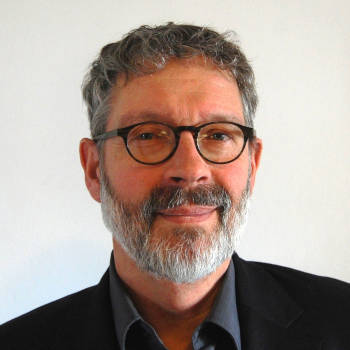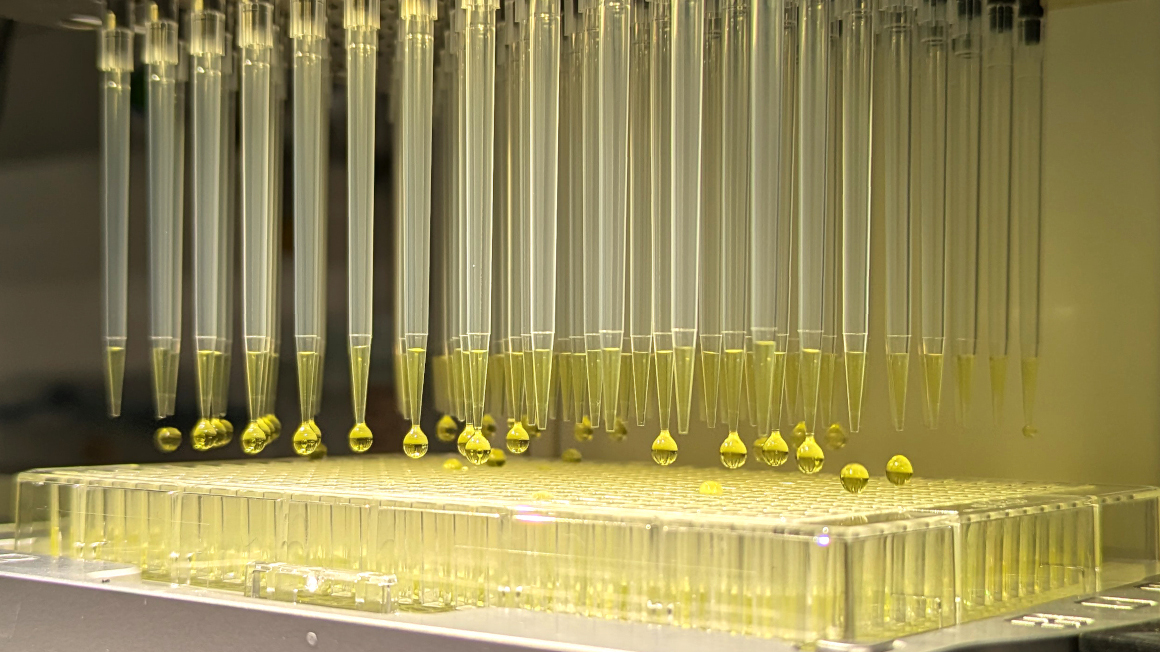Deciphering neural networks
Harald LukschProfession
Neurobiologist
Position
Professor of Zoology and Director of the Leonardo da Vinci Center for Bionics at the TU Munich

Profession
Neurobiologist
Position
Professor of Zoology and Director of the Leonardo da Vinci Center for Bionics at the TU Munich

Munich neurobionics expert Harald Luksch is investigating the sense of orientation in animals and using this knowledge to develop algorithms for robotics.
A dragonfly unfolds its wings and whirrs off. A little further on, a butterfly spreads its wings and glides through the air. Both animals have learned to fly through evolution, but with different techniques. "This fascinated me even as a child," Harald Luksch remembers. "When I was a boy, I was outdoors a lot. At that time there was a desire to understand more about nature". Today, Luksch is professor of zoology at the Technical University of Munich, but he still likes to spend his spare time in natural surroundings, observing and classifying the animals there.
Philosophy is a part of it
"I could have been an engineer," Luksch says in retrospect, "but I was more interested in biology than anything else." He was particularly fascinated by how living creatures think. What could be more obvious than studying neurobiology? During his time at the University of Bonn, he met Professor Wolfgang Walkowiak, still young at the time, whom he eventually followed to the University of Cologne for his doctorate. The first Postdoc position led Luksch to Bremen, where he met the biologist and brain researcher Gerhard Roth, who was also intensively involved with philosophy - a highly relevant exploration for a neuroscientist.
Soon afterwards, however, Luksch went to the USA. "A time abroad was considered an integral part of a research career even then," said Luksch. "The USA had the richest scientific culture. Today there are many strong groups in Europe as well." A stay abroad widens the view and enables scientists to immerse themselves in the great international research scene. "The time in California was formative in many respects, as it was there that my current research topic became more concrete.
Natural solutions often unexpected
An attractive offer of the RWTH Aachen drew the young scientist back close to his hometown St. Augustin. The work in Aachen has brought the technical aspect into his work, Luksch says: "It was the first time that bionics came into play". He was inspired by the technical implementation of biological evolutionary solutions. "All organisms have similar problems to ours, and evolution has found many different answers". After all, an animal or a plant cannot say: I will use titanium for this. The solution has to be achieved with the available material. "Many of these solutions are quite unexpected for us," says Luksch.
"I was always very interested in understanding the most diverse things - for example, how the brain works," said the 53-year-old explaining his decision in favour of neuroscience. "Being curious and wanting to understand how the world works, how people work - that's what drives most scientists." Of course, one sometimes has to focus strongly on certain topics in order to "crack the tough nuts, but a certain openness to new questions is also important".
Tobias Kohl (left) and Harald Luksch investigate a garden boa.

What happens in the brain?
In his career, Luksch has worked with many different animal models, always with the question: How can an animal react correctly and quickly to environmental influences and new situations? How is this reaction represented in the brain? And finally: How can we achieve a similar performance with robots? "Animals have such simple components in the brain, and our technology is much more complex, but still has problems. For instance, robots lack the flexibility to deal with unknown conditions. "Moving around in a normal living room is already a challenge for a robot."
Luksch also habilitated in Aachen. "That wasn't necessarily my goal, but if you wanted to stay in science, there was no way around it," he says. Today, there are ways for up-and-coming researchers to be appointed at an early age, even without a habilitation.
Establishment of the Leonardo da Vinci Center
In 2007, Luksch made his way to the TU Munich, where he still works today. "At that time, a similar type of activity to that in Aachen had begun," explained the biologist. The Leonardo da Vinci Center for Bionics at the TUM was currently being established. Luksch was given the opportunity to help shape this development. Today, he runs the center himself, in which roboticians, biologists, electrical engineers, computer scientists and medical engineers are organized. "We are strengthening interdisciplinary work here because there is a lot of innovation to be found at the intersections," explains Luksch.
In order for interdisciplinarity to succeed, however, it is necessary to master the language of the other fields. Physicists and biologists, for example, have very different concepts of measurement accuracy. "Physicists often ask why we have not made a measurement ten times in order to achieve a more reliable result. We biologists are often happy if we have succeeded in measuring even once, for example when the material is difficult to obtain," smiles Luksch. His task at the Leonardo da Vinci Center is therefore to bring people together, organize workshops: "What does the other researcher do and what results does he already have?
From basic research to application
"We want to broaden the students' view for solutions beyond the classical approaches," stresses Luksch, who is also Dean of Studies for the Biosciences. Education is therefore an important area of responsibility for the Center. In addition, thanks to several major donors, the TU Munich has the means to allow students to put their own ideas into practice under the guidance of specialists. Sometimes the outcome is an innovative product.
Despite all its basic research, the center is also product-oriented. Research goals include, for example, improved hearing aids, deep brain stimulation for Parkinson's disease, signal reading in the brain to control robotics - from which paraplegics, for example, benefit -, automatically shaded building casings, structural electronics for lightweight construction and energy efficiency, as well as surface design for minimal soiling.
Making orientation easier for robots
At Luksch's chair itself, the team deals with how animals orient themselves, in particular how they combine the information of different senses. "We do have high-tech sensors, but nature is often better with its simple sensors because it connects them," explains the biologist. "We humans also combine vision and hearing and thus achieve a precise orientation reaction. In bats, ultrasound is added to vision, in rattlesnakes infrared perception. How does their brain connect this information, under which conditions are which sensors prioritized? The result could be algorithms that make orientation easier for robots.
The many different tasks mean that Luksch is at the university almost every day. "The work defines my everyday life," admits the professor. His wife and his two children, who are now almost adults, have to be very understanding, as he knows. Besides the family, there is little time left over for hobbies: "I like to work on a vintage car that I brought back from the USA," Luksch says. And of course the 53-year-old still likes to go on field trips "to keep the fascination for nature alive and to convey it to students". Faust's drive to understand the inner workings of the world, the tension between basic research and application - who better to put it in a nutshell than Luksch himself: "Our field of research is a great reserve of innovation - but you never know what the outcome will be."
Björn Lohmann


